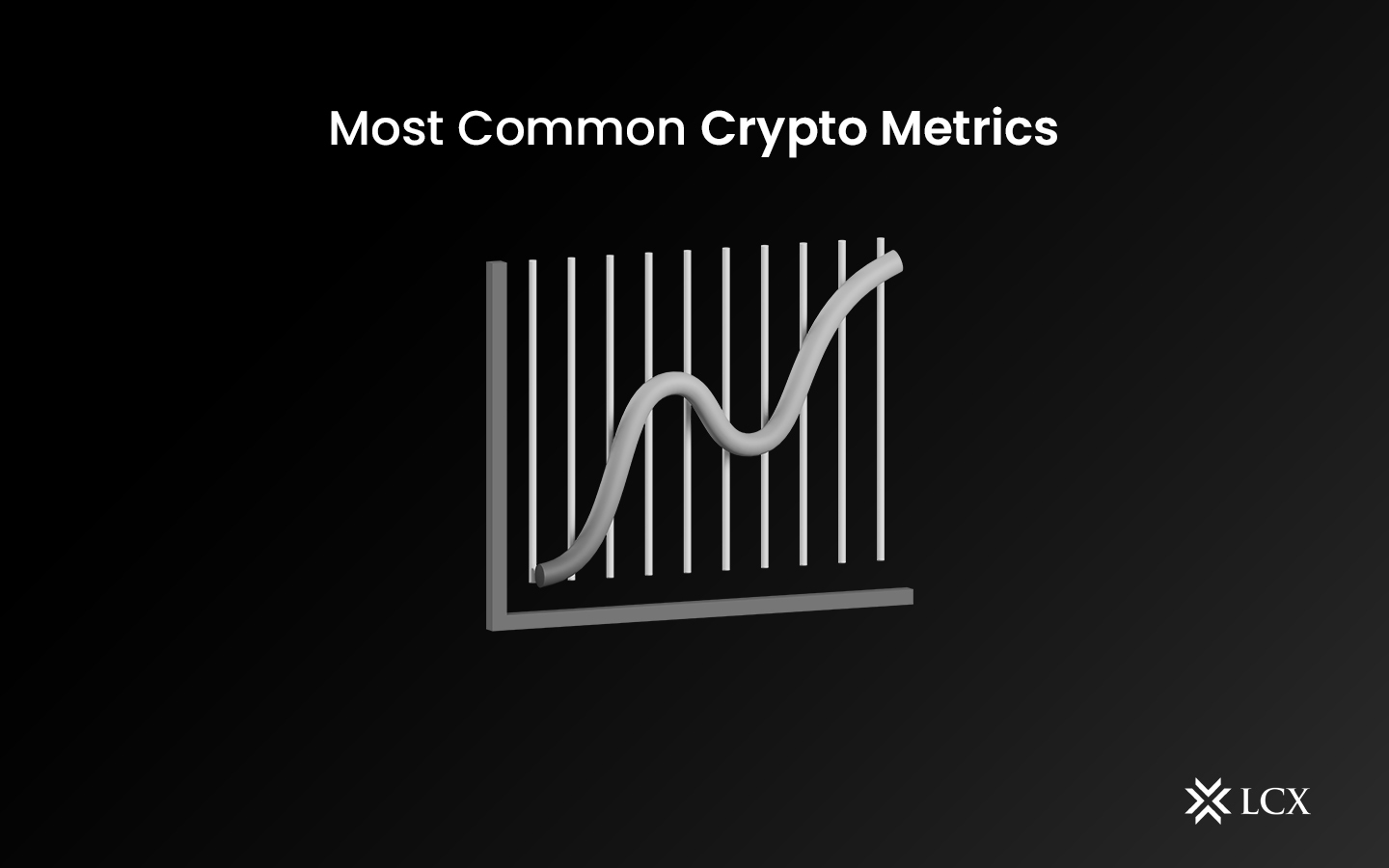The crypto market has been trending in the global economy for quite a while now. The investors in cryptocurrencies are increasing day and night. But, how do you know where to invest and where not to? And most importantly, what measures do you take to determine if the given crypto is a good deal for you. Just like we use the two metrics: cheap and expensive, for all our daily life decisions, there are certain metrics that we use for making investment decisions in the crypto industry. Crypto metrics is responsible for all this. It gauges your interest in the crypto market.
What Are Crypto Metrics?
Crypto metrics are used to understand the trustability and behavior of all cryptocurrencies.
It basically includes a long list of different numbers that help you determine what cryptocurrency to buy, sell, or hold. It mostly consists of volume-based indicators that measure the total open positions at any particular time held by market players.
The Most Common Crypto Metrics Are:
Market capitalization: Also known as Market cap, is a common term that has been used in the stock market for decades now. It has quite a similar function in the crypto market too. Here, it refers to the total value of the crypto asset in USD. For its calculation, you need to multiply the current price of the crypto asset by its circulating supply.
Funding rates: Funding rates are regular payments made by traders to keep the price of a perpetual futures contract close to the index price. A perpetual futures contract is a non-expiring agreement to buy or sell an asset.Positions may be held for as long as the trader desires, but holding fees, also known as the funding rate, must be paid. Funding rates are proportional to contract volume and reflect traders’ sentiments in the perpetual swaps market. Positive financing rates indicate that long-term traders have an advantage and are willing to pay short-term traders for funding. Negative funding rates imply that short-term traders have an advantage, as they are willing to compensate the long-term traders.
24h Volume: The number of tokens traded in the last 24 hours is referred to as the 24h volume metric. To find this number, add up all of the trades reported by each exchange. This metric gives you an idea of how popular the token is. This is an important indicator because it shows the currency’s true value. Assets with a higher volume are less susceptible to rapid price fluctuations. Although this is not a rule, assets with higher volumes tend to have more realistic price values.
Open interest: The number of contracts traded in the market at any given time is referred to as “open interest.” It’s another way to gauge interest in the cryptocurrency market. It is one of the most commonly used volume-based indicators and is used to measure the total number of open positions held by market participants at any given time. The calculation is made by adding the total number of open trade positions and subtracting the total number of closed trades. This metric is significant because it provides a broad picture of capital inflows into markets. The amount of open interest increases as more money comes in, and vice versa.
Exchange flows: This metric is used to determine the movement of crypto in and out of the exchange. There are three further types of exchange flows:
- Exchange inflow: It determines how much crypto has been transferred from non-exchange wallets to exchange wallets.
- Exchange outflow:It determines how much crypto has been transferred from exchange wallets to non-exchange wallets.
- Exchange balance: This is the difference between inflow and outflow.
NVT: It stands for Network Value to Transactions Value. The NVT ratio is a measure of the relationship between market capitalization and transfer volume. NVT is unique in that it compares two of Bitcoin’s main value propositions:
- Transfer Volume: Settlement/Payments Network
- Market capitalization: a store of value
The NVT ratio, along with the following broad framework, allows users to see the relative balance between these two components: the High NVT ratio and the Low NVT ratio.
The Fear and Greed Index: The Fear & Greed Index is a broad-based cryptocurrency indicator that measures the emotions of investors. The Fear and Greed Index for Bitcoin (BTC) and other popular cryptocurrencies was created by Alternative.me, a software company. The index uses weighted data sources to generate a score ranging from 0 (extreme fear) to 100 (extreme greed) that represents the overall sentiment of the cryptocurrency market.
Realized Cap: Realized capitalization, or realized cap, is a variant of market capitalization that assigns a value to each unspent transaction output. Rather than its current worth, the value at which it was last transferred is used as the basis. As a result, rather than representing the market value, it represents the realized value of all coins in the network. The realized cap, which weighs coins based on their actual presence in a chain’s economy, reduces the impact of lost and long-dormant currencies. When a coin transferred at a much lower price is spent, the coins are re-valued to the current price, increasing the realized cap by the same amount.
- Bitcoin Rainbow Chart: There are different categories for the Bitcoin prices, such as “Accumulate”, “Fire Sale”, and “HODL”. Now, there are eight of them, thus having the name of the Bitcoin rainbow chart. This chart helps investors study bitcoin prices and determine when it is at the most favorable point in the cycle, based on the previous cycle’s trends.
- On-balance Volume (OBV): This technical indicator is used to determine the momentum of the cryptocurrency. It allows you to predict the changes in prices of the cryptocurrency based on the change in its volume. A positive OBV reading indicates that there is more buying pressure than selling pressure, whereas a negative OBV reading indicates that there is more selling pressure than buying pressure.
- MACD: It stands for Moving Average Convergence-Divergence Indicator. It shows the link between the two moving averages of an asset’s price. This indicator helps in determining if the price trend of the asset is waning or strengthening.
- TVL: It is short for “Total Value Locked.” This is an exclusive metric of the crypto market that is used for projects that allow staking in their protocols. Total value locked (TVL) is the number of tokens that users have locked in the protocol to provide liquidity or security while earning yields. It is mainly used for yield farming methods and DeFi. This metric is used to show that the protocol is doing well for the users.
Conclusion
Crypto trading has become a go-to for investors in the financial world, but there are a few things that can simplify your process of strategizing your decision-making while investing in any cryptocurrency. The abovementioned metrics can help you determine the best cryptocurrency for you at any particular time.









